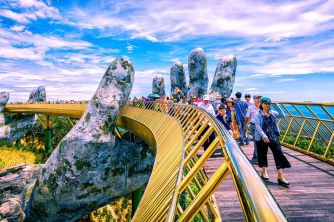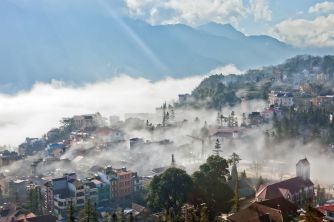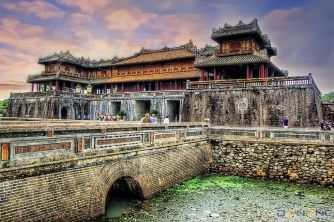Hanoi Old Quarter is one of the oldest continuously developed areas in Vietnam that has gone through a history of 2000 years. Situated near the Lake of Restored Sword and Long Bien Bridge. Used to be a former citadel wall, the Old Quarter became more well-known as a crafts area when King Ly Thai To decided to move the capital from Hoa Lu to Hanoi in the 11th century. Later, the area turned into a village for Hanoi local people with a round structure with thousands of houses on stilts. In the 13th century, some tiny workshop villages gathered into craft cooperatives. Skilled craftsmen moved to the Quarter and performed similar services. They lived and worked together to transform private merchandise to the designated streets.

.jpg)






The name
Hanoi Old Quarter of 36 Iconic Streets, the name has entered the subconscious of many people with the most simple and rustic features from names such as Hang Mam, Hang Non, Hang Duong, Hang Muoi... Small traders here exchange and trade. The old town has a very unique feature of the bustling urban area, crowded with people, but still retains the traditional cultural values from thousands of years old of the ancient land. Each street gathers workers from famous craft villages around the ancient Thang Long citadel, turning each street here into a miniature craft village in the heart of Hanoi.

Photo: A corner of the Hanoi Old Quarter
Architecture
Architecture is another unique feature that makes the old town unique, with a tube house structure, slanted tile roofs and facades of specialized shops. The houses are small, but they are arranged very cleverly and reasonably by people, still fully serving the needs of the people here.
.jpg)
Photo: Hang Dao Street
Culture
The old town is the place to keep the tradition of a thousand years of civilization, with cultural values still preserved in about 100 long-standing architectural works including communal houses, temples, pagodas and assembly halls. Especially Bach Ma temple in Hang Buom street, one of the four towns of the ancient Thang Long citadel.

Photo: Cyclo on the street
Those who come here for the first time, or foreign tourists, may feel a bit overwhelmed and confused when walking between small but crowded streets, houses are close together, vehicles move like a loom, the scene for those who are not used to it is probably a bit chaotic. But you have to go, feel, and stay to see all the unique and very strange culture of life and people here.

Photo: Hoan Kiem Lake (Collected photo)

Autumn flower bikes (Collected photo)
Every festival, people focus on Hanoi's Old Quarter, especially Hang Ma Street, a typical street of colors, sounds as well as Eastern culture.

Hang Ma Street is colorful every mid-autumn festival (Collected Photo)
Cuisine
Hanoi's Old Quarter is beautiful with small street vendors. It is really enjoyable to sit by Hoan Kiem Lake and enjoy the wind, eat Trang Tien ice cream, watch the flow of people passing by. Old Hanoi with street vendors running through each street with simple dishes of nuggets.

Photo: Nuggets
Ha Noi cuisine is associated with traditional dishes such as bun cha, pho, bun thang,.. of small roadside shops, or in old houses.

Photo: Pho
Hanoi Old Quarter at night is much busier with many activities of buying, selling, eating, cultural and artistic exchanges. You can go to Hanoi Old Quarter night market to immerse yourself in melodies and songs every Saturday night. In addition, you can also walk around Hoan Kiem Lake, enjoy the fresh air and the shimmering beauty of the colorful lights along the lake at night.




